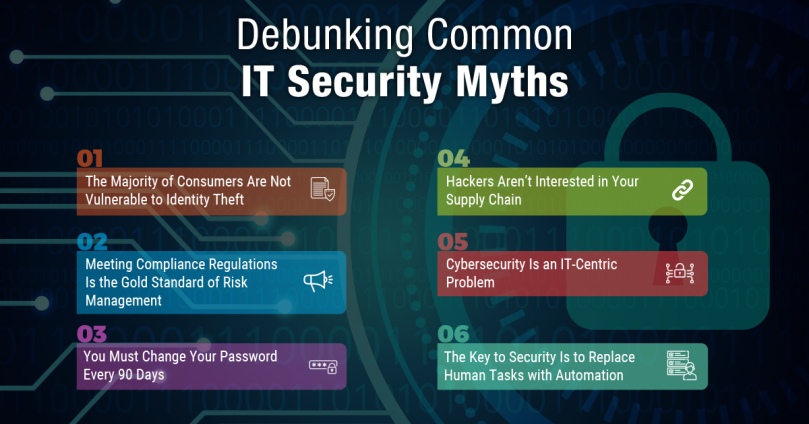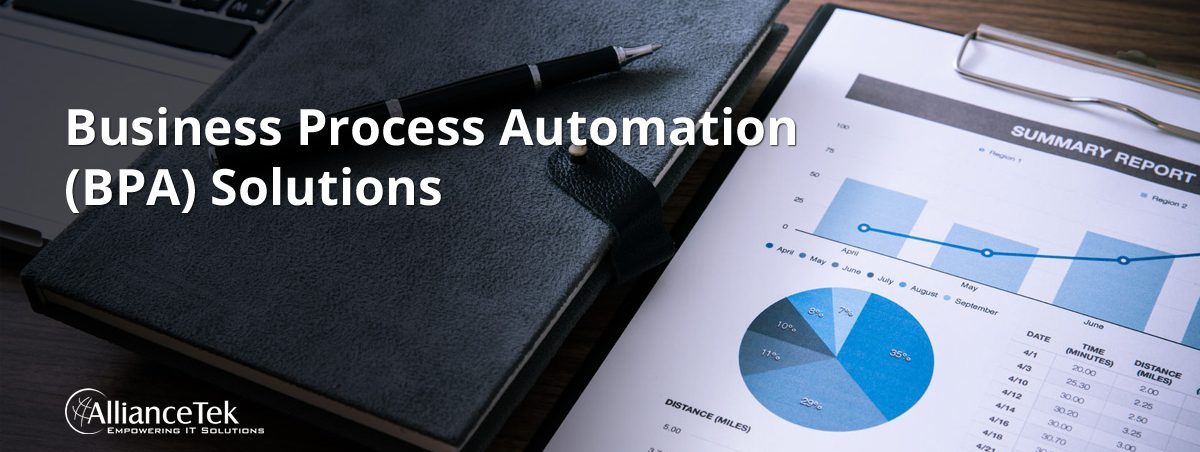Business process automation delivers productivity gains that help organizations grow and be more competitive. But with that technology comes the added responsibility of protecting business-critical data from cybercriminals who are intent on disruption.
Keeping your company’s data and intellectual property secure is imperative. But cybersecurity has also become an issue that affects every aspect of our lives. Cybersecurity software manufacturer HelpSystems recently asked six cybersecurity experts from around the world to debunk their favorite IT security myths.

Myth #1: The Majority of Consumers Are Not Vulnerable to Identity Theft
According to Michael Bruemmer, Vice President of Data Breach Resolution & Consumer Protection at Experian, consumers don’t fully realize that their online behavior may actually be risky. They don’t understand the concept of the dark web and the likelihood of personally identifiable information getting placed there. He emphasizes that consumers should use this as an opportunity to educate themselves on identity theft risks and how to better protect their personal data online.
Myth #2: Meeting Compliance Regulations Is the Gold Standard of Risk Management
Bob Carver, Sr. Security Analyst at Verizon Wireless, says that corporations frequently focus on their regulatory compliance at the expense of threat intelligence and analytics. He notes that these organizations do not fare well when it comes to preventing data compromises. He speculates that this could be because either the companies are overconfident or perhaps they don’t have adequate visibility or control over detecting threats. Today’s reality is that corporations must invest in risk mitigation in two dimensions: compliance through controls and threat intelligence through analytics.
Myth #3: You Must Change Your Password Every 90 Days
Troy Hunt, Microsoft Regional Director and an author at Pluralsight, notes that there are mixed signals regarding password changes. Although most organizations adhere to the 90-day password rule, the British National Cyber Security Centre and the National Institute of Standards and Technology do not recommend it because they believe it acerbates the problem.
Myth #4: Hackers Aren’t Interested in Your Supply Chain
Notes Jonathan Lampe, Executive Director of the CFTP Program, says that experienced hackers are interested in your supply chains for three primary reasons. First, these supply chains control millions of dollars of payments and shipped goods. Second, they realize that these supply-chain systems can be back doors into mainframes and customer databases. And third, the communications systems associated with the supply chains are hooked into the internet, which opens the door to additional cybercrime opportunity.
Myth #5: Cybersecurity Is an IT-Centric Problem
Independent information security consultant Kevin Beaver at Principle Logic believes that security has become an issue that needs to be treated as a core business function that goes beyond the technical aspect handled by IT. Although the technical security components may be under control, there still seems to be a false sense of security that leads to continued incidents and data breaches. It’s time for cybersecurity to be brought to the boardroom.
Myth #6: The Key to Security Is to Replace Human Tasks with Automation
Humans are still the major weakness when it comes to IT security vulnerability, says Ben Cole, Senior Site Editor at SearchCompliance.com. He points out that the largest and most expensive data breaches in the past five years have been due to human error. Organizations have attempted to take the human element out of the equation by using artificial intelligence, machine learning, and robotic process automation, but this has only partially addressed the issue while raising new concerns. He recommends that next-generation IT security focus on ways to integrate the human element into automated processes so organizations can get the best of both worlds.
About AllianceTek
AllianceTek is an IT solutions provider that helps you design the ideal combination of people, processes, and systems so you can scale your business operations to increase productivity and sustain a competitive edge. Our speciality is implementing, integrating, and optimizing technology that has previously been out of reach of typical fast-growing companies. AllianceTek provides the IT expertise that most small and mid-sized companies do not have at their disposal. Our core expertise is Salesforce, .NET, SharePoint, iOS, and Android applications, and web, cloud, mobile, customer relationship management, and multimedia platforms.

